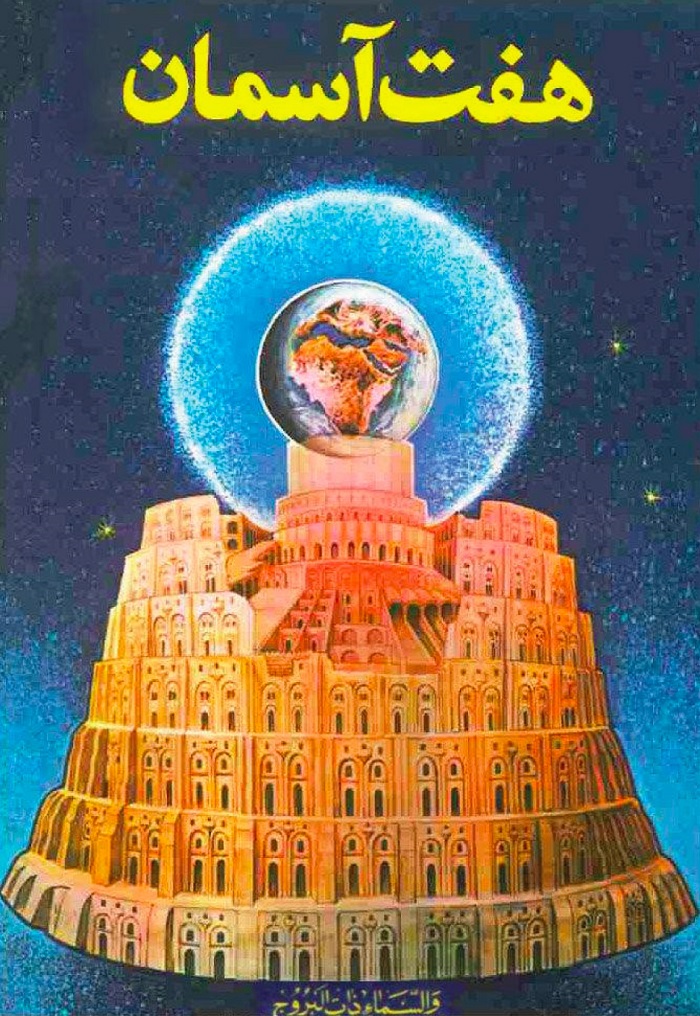A brief introduction of the book:
The book “The Seven Heavens” examines the interpretation of the word “Saba’a Samavat” and associated keywords in the Quran. “The Seven Heavens” has long existed in different cultures and religious beliefs, especially among the Mesopotamians and Egyptians, yet mostly as a myth. The Quran has described and mentioned the “Seven Heavens” in several verses, which emphasizes the significance of this topic. Besides the fact that the phrase, “the seven heavens,” has been mentioned over a dozen times in the Quran, other divine texts also discuss this issue in various forms. Such references confirm the importance of the subject, and Muslim scholars have long referred to these sources as a guide in interpreting the verses associated with the “Seven Heavens”. But so far all interpretations of these verses have fallen short of providing a cohesive and coherent interpretation. The Quran describes the “Seven Heavens” as a protective roof and a solid covering that has no penetration, and emphasizes the creation of the “Seven Heavens” after the creation of the Earth during two periods. The keywords associated with the “Seven Heavens” in the Quran include ‘Burooj’, ‘Shayatin’, and especially ‘Shaytan-e-Rajim’ and ‘Shaytan-e-Marid’, ‘Zinat-ol-Kavakib’, ‘Misbah’, ‘Shahab-e-Saghib’ and ‘Shahab-e-Mobin.’ To understand the verses of the “Seven Heavens” correctly, one must note the unity and harmony of all the verses in the Quran and the cohesiveness of the meaning of the keywords associated with the “Seven Heavens”, such as ‘Shayatin,’ ‘Burooj,’ and ‘Kavakib’, mentioned in other verses. For more information, I invite the eager readers to read the book “The Seven Heavens”.
The creation of the “Seven Heavens” after the creation of the Earth
Based on the scientific fact that the Earth came into being after the creation of the Universe, galaxies, stars, and everything in between, and also the verses of ‘Surah-al-Fussilat’ and ‘Surah-al-Baqarah’, the meaning of the “Seven Heavens” cannot be the Universe, Galaxies or the Stars in the night sky. Therefore, the Earth’s atmosphere remains the only possible phenomenon described in these verses. Evidence shows that Earth’s current atmosphere was created after the formation of the Earth and not simultaneously. Besides, this atmosphere is not only the product of internal changes in the solid Earth but also a product of life and its evolution. With the creation of life on Earth, the atmosphere entered the second stage of its two-stage formation. The formation of the atmosphere in two stages is another confirmation of the validity of the verses describing the “Seven Heavens”, which describe it as a two-stage event.
The characteristics of the “Seven Heavens”
Based on its unique characteristics, the Earth’s atmosphere is divided into different levels. These levels can be defined by temperature, chemical composition, and functionality. The Quran has emphasized the role of the “Seven Heavens,” as a protective layer around the Earth, which defines how this layer is divided into seven distinct levels. These seven levels of the atmosphere are ozone, molecular oxygen, nitrous oxide, atomic oxygen, helium, hydrogen, and the magnetosphere. These layers protect life on Earth from the threat of electromagnetic waves, energetic cosmic and solar particles, meteorites, and interplanetary particles.

Figure 1: This diagram shows the different layers of the atmosphere based on temperature and composition. The Earth’s atmosphere can also be classified according to its defensive function, which is how the Quran divides the atmosphere and the basis of the number seven.
The “Seven Heavens” and the “Shayatin”
The word ‘Shaytan’ in the Quran refers to anything that threatens life on Earth. The protective shield of the Earth, or in the words of the Quran, ‘Burooj,’ acts as an impenetrable barrier against most of these ‘Shayatin,’ which pose a serious threat against life on Earth. And if any ‘Shaytan’, for example, a meteorite, enters the atmosphere, it will burn due to friction, leaving a bright streak on their path in the sky. The Quran beautifully describes this mechanism as being followed by fire.
Perhaps one of the most beautiful expressions of the Quran about the “Seven Heavens” is verses 1-10 of ‘Surah-al-Safat’. These verses describe the magnetosphere’s role in defending life on Earth against the high-energy charged particles. Earth’s magnetosphere traps these particles as they approach Earth producing the Van Allen radiation belts around the planet. Disturbances to the trajectory of these particles, allows them to escape the magnetic field and produces the beautiful lights of the aurora as they interact with the atmosphere. This phenomenon also occurs on other planets in our Solar System their natural satellites, brown dwarfs, and even comets. The Quran describes this phenomenon in verses 1-10 of ‘Surah-al-Safat’ and refers to it as ‘Zinat-al-Kavakib’ or the adornment of the planets.
The “Seven Heavens” and the “Burooj”
“Burooj” was adopted into the Arabic language from Latin, which means forts and towers that were built to protect cities against enemy invasion. The Quran mentions ‘Burooj’ in several verses in association with the “Seven Heavens,” emphasizing the protective role of the “Seven Heavens.” Verse 18 of ‘Surah-Al-Hijr’, in addition to defining the “Seven Heavens” as comprising different layers, which is one aspect of ‘Burooj’, beautifully describes its protective role.
The first edition of the book, “The Seven Heavens,” was published forty years ago, and the second edition has been rewritten with a complete revision. A documentary also accompanies the book, which summarizes the topics discussed in the book.

Fig 2: This image is the cover image of the first edition of the book ‘Seven Heavens’ and a symbol of the man-made ‘Burooj’ (forts) on the Earth and its connection with the ‘Burooj’ in the ‘Seven Heavens’. Just as man-made ‘Burooj’ on Earth were built to protect humans and their societies, the ‘Burooj’ of the ‘Seven Heavens’ were created to protect life on Earth.
This post is also available in: Persian
